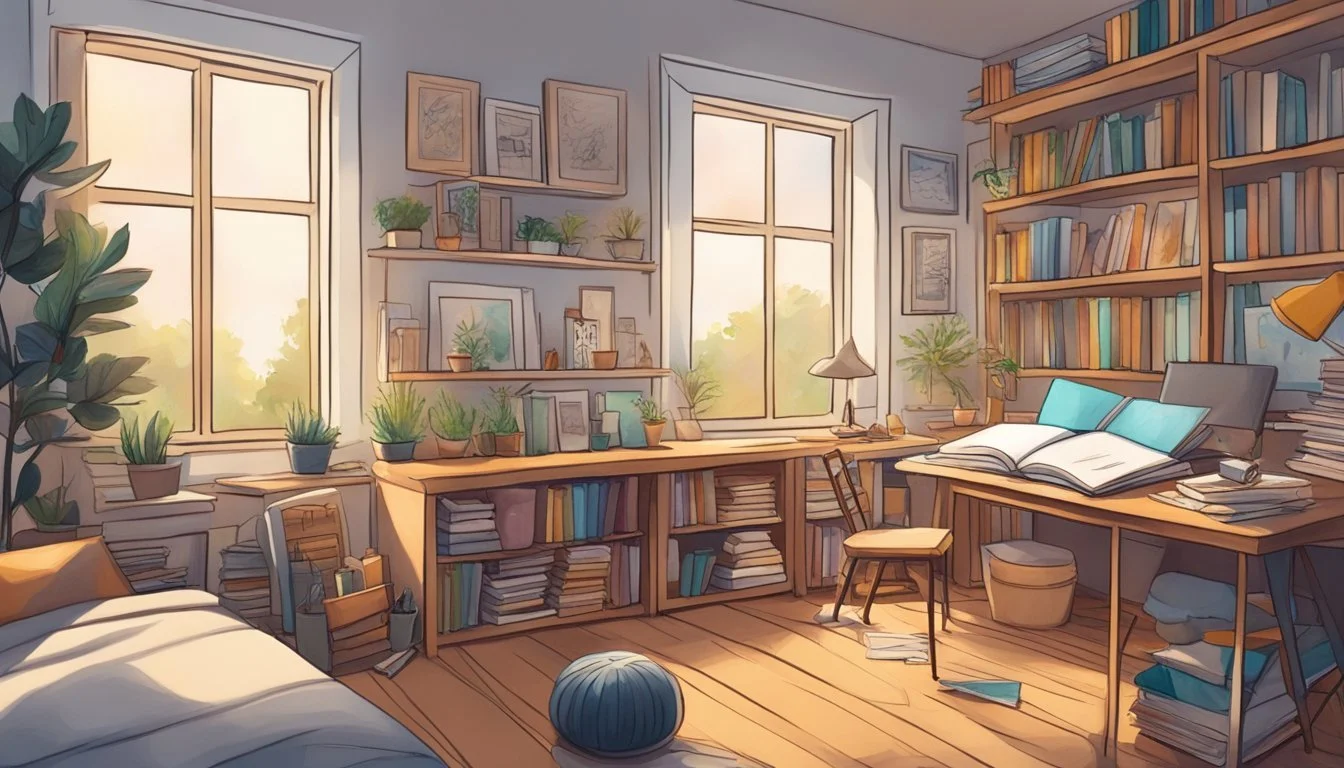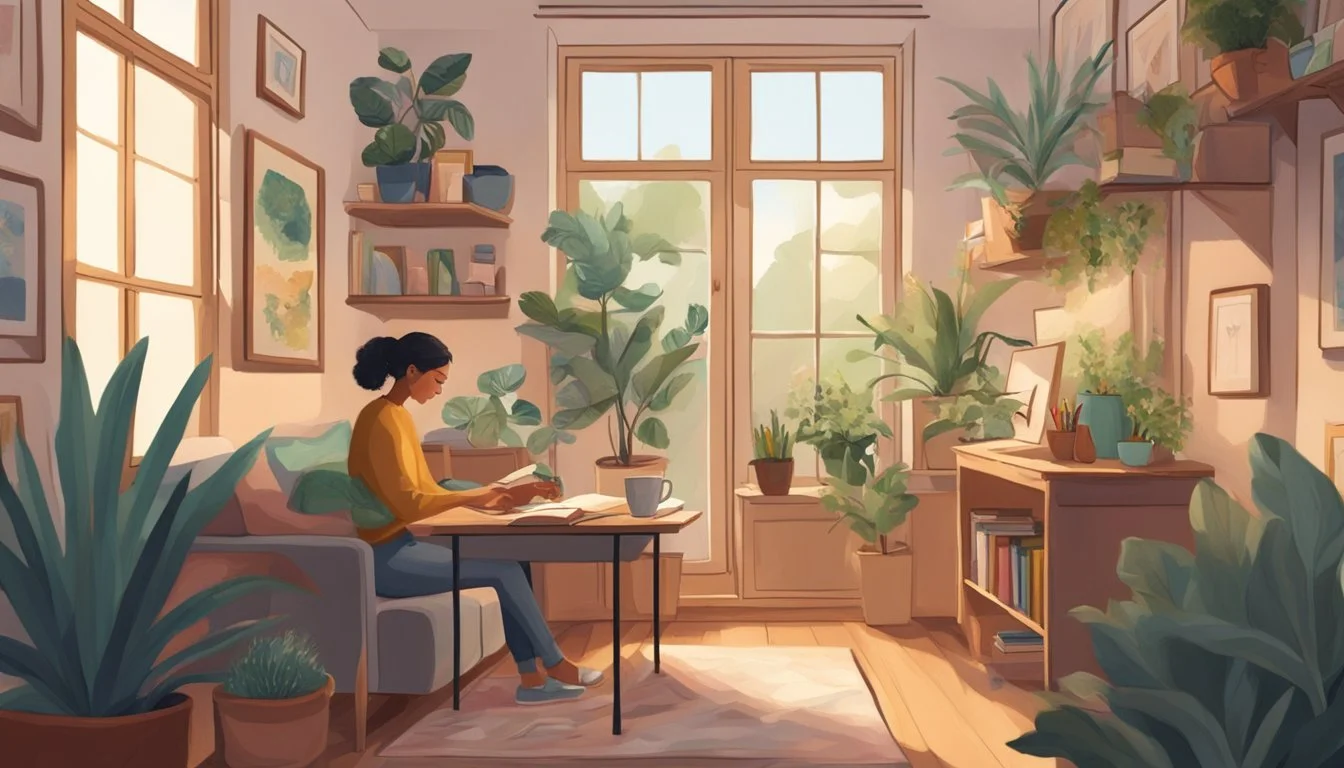8 Hobbies That Nurture the HSP's Creative Spirit
Unleashing Sensitivity Through Art
Highly Sensitive People (HSPs) possess a unique trait that allows them to experience the world with great depth and intensity. This heightened sensitivity can be both a blessing and a challenge, particularly when it comes to creative expression. Many HSPs find solace and fulfillment in pursuing hobbies that align with their innate creativity and emotional depth.
Engaging in activities that nurture the HSP's creative spirit can provide a valuable outlet for processing emotions, reducing stress, and fostering personal growth. By exploring hobbies tailored to their sensitive nature, HSPs can tap into their rich inner world and channel their experiences into meaningful creative endeavors. These pursuits not only offer a means of self-expression but also serve as a form of self-care, allowing HSPs to recharge and thrive in a world that often feels overwhelming.
1) Painting
Painting offers a soothing and expressive outlet for Highly Sensitive Persons (HSPs). The tactile experience of brushing colors onto a canvas can be deeply satisfying for those who are attuned to sensory input.
HSPs often find joy in mixing hues and creating subtle variations of color. This process allows them to channel their heightened perception of visual details into a creative endeavor.
The act of painting provides a quiet, introspective space for HSPs to process their emotions. Through abstract or representational art, they can externalize complex feelings without the need for words.
Many HSPs appreciate the flexibility of painting. They can work on small, detailed pieces or large, sweeping canvases depending on their mood and energy levels.
Painting also offers a sense of accomplishment as HSPs see their visions come to life. The finished artwork serves as a tangible representation of their inner world and creative spirit.
For HSPs who enjoy structure, learning various painting techniques can provide a fulfilling challenge. They may find satisfaction in mastering different styles and mediums over time.
2) Creative Writing
Creative writing offers a powerful outlet for highly sensitive people to express their rich inner worlds. HSPs often have vivid imaginations and deep emotional experiences that translate well to the written page.
Through fiction, poetry, or personal essays, HSPs can explore complex themes and nuanced emotions in a safe, controlled environment. The act of writing allows them to process their experiences and observations at their own pace.
Many HSPs find that writing helps them make sense of their heightened sensitivities and unique perspectives. Putting thoughts on paper can provide clarity and insight.
Creative writing also taps into the HSP's natural ability to notice subtle details and make unexpected connections. This keen awareness translates into vivid descriptions and compelling narratives.
For HSPs who prefer solitude, writing is an ideal solo creative pursuit. It provides a way to engage deeply with ideas and emotions without the overwhelm of social interaction.
Regular writing practice can boost an HSP's confidence in their creative abilities. Seeing their thoughts and stories come to life on the page is deeply validating.
3) Graphic Design
Graphic design offers HSPs a powerful outlet for their creative energy and attention to detail. This digital art form allows them to express their visual sensitivity through the creation of logos, layouts, and digital illustrations.
HSPs often excel in graphic design due to their heightened perception of color, form, and aesthetics. Their ability to notice subtle nuances can lead to the creation of visually striking and emotionally resonant designs.
The digital nature of graphic design provides a controlled environment that many HSPs find comfortable. They can work at their own pace, adjusting elements until they achieve the perfect balance and harmony in their compositions.
Graphic design also offers HSPs the opportunity to blend their creativity with practical problem-solving. They can use their empathetic nature to understand client needs and create designs that effectively communicate messages to target audiences.
For HSPs looking to explore graphic design, starting with user-friendly software like Canva or GIMP can be a good entry point. As skills develop, they may progress to more advanced tools like Adobe Creative Suite.
4) Pottery
Pottery offers HSPs a tactile and immersive creative outlet. The process of molding clay engages multiple senses, allowing for a deeply satisfying experience.
HSPs can find solace in the rhythmic motions of shaping clay on a wheel. The repetitive nature of this activity promotes a meditative state, helping to calm an overactive mind.
The versatility of pottery provides endless possibilities for expression. HSPs can create functional items or purely decorative pieces, each reflecting their unique sensibilities.
Working with clay allows HSPs to explore textures and forms in a three-dimensional space. This hands-on approach can be particularly rewarding for those who process information through touch.
The transformation of raw clay into finished pieces mirrors the creative journey. HSPs often appreciate the gradual development and patience required in pottery.
Pottery classes or community studios offer opportunities for gentle social interaction. HSPs can connect with like-minded individuals while maintaining focus on their individual creations.
5) Photography
Photography allows highly sensitive people to capture the world through their unique lens. HSPs often notice subtle details and nuances that others might miss, making them naturally gifted photographers.
This visual art form provides a creative outlet for expressing emotions and perspectives without the need for words. Through photography, HSPs can communicate their inner experiences and share their sensitivity to beauty.
The act of taking photos can be a meditative process for HSPs. It encourages mindfulness and presence in the moment as they focus on composition, lighting, and subject matter.
Photography also offers flexibility in terms of social interaction. HSPs can practice their craft alone in nature or in bustling urban environments, depending on their comfort level and energy.
Digital editing adds another layer of creativity, allowing HSPs to further refine their vision and artistic expression. This post-processing stage can be a soothing activity for those who enjoy quiet, focused work.
As a hobby, photography provides HSPs with tangible results of their creative efforts. They can revisit and reflect on their experiences through the images they've captured, fostering a sense of accomplishment and personal growth.
6) Knitting
Knitting offers a soothing and rhythmic activity that can be particularly appealing to Highly Sensitive Persons (HSPs). The repetitive motions of needles and yarn provide a meditative experience, allowing HSPs to enter a state of flow and creative expression.
The tactile nature of knitting engages the senses in a gentle manner. Soft yarns and the subtle clicking of needles create a sensory-friendly environment that HSPs often find comforting.
Knitting projects can be tailored to suit individual preferences. HSPs may choose calming, neutral colors or explore vibrant hues depending on their current emotional state and creative inclinations.
This craft allows for gradual progression and skill development. HSPs can start with simple patterns and advance at their own pace, building confidence and a sense of accomplishment along the way.
Knitting also offers a social outlet when desired. HSPs can join knitting circles or online communities, sharing their creations and connecting with like-minded individuals in a low-pressure setting.
The finished products of knitting serve as tangible representations of creativity and effort. HSPs may find satisfaction in gifting their handmade items or using them to enhance their personal environments.
7) Scrapbooking
Scrapbooking offers HSPs a creative outlet to preserve and celebrate their cherished memories. This hobby combines crafting, journaling, and visual storytelling in a deeply personal way.
HSPs can express their sensitivity through carefully chosen colors, textures, and layouts. They often find comfort in the tactile nature of working with papers, photos, and embellishments.
The process of creating scrapbook pages allows HSPs to reflect on meaningful experiences. They can explore their emotions and insights while arranging photographs and mementos.
Scrapbooking themes can range from family history to travel adventures, or even literary inspirations. HSPs might create pages based on favorite book settings or celestial wonders that captivate their imagination.
This hobby provides a peaceful, solitary activity that HSPs can enjoy at their own pace. It also offers opportunities for social connection through crafting groups or workshops if desired.
Ultimately, scrapbooking serves as both a creative pursuit and a form of self-expression for HSPs. It allows them to honor their experiences and preserve important memories in a tangible, artistic format.
8) Calligraphy
Calligraphy offers a serene and expressive outlet for highly sensitive people. This ancient art form allows HSPs to channel their creativity through elegant letterforms and flowing ink.
The meditative nature of calligraphy provides a calming experience for those who are easily overwhelmed by external stimuli. As practitioners focus on each stroke, they enter a state of flow that can reduce stress and anxiety.
Calligraphy requires minimal equipment, making it an accessible hobby for HSPs. A pen, ink, and paper are all that's needed to begin exploring this art form. Many free resources and practice sheets are available online for those just starting out.
The rhythmic motions of calligraphy can be deeply satisfying for HSPs who appreciate precision and beauty. As skills improve, practitioners can create stunning pieces of art or personalized gifts for loved ones.
Calligraphy also offers opportunities for social connection through workshops or online communities. HSPs can share their work and learn from others in a supportive environment that respects their sensitivity.
The Importance of Creative Outlets for HSPs
Creative expression provides highly sensitive people with vital emotional release and self-discovery. Engaging in artistic pursuits allows HSPs to process their rich inner experiences and find balance amidst overstimulation.
Understanding High Sensitivity
High sensitivity is a trait characterized by deep processing of sensory information and strong emotional responses. HSPs have heightened awareness of subtleties in their environment and often feel things more intensely than others. This sensitivity can lead to overwhelm, but also fuels creativity and insight.
HSPs tend to have vivid imaginations and pick up on nuances others miss. Their depth of processing lends itself well to artistic endeavors. Creative outlets give HSPs a productive way to channel their sensitivity and express their unique perspectives.
Emotional and Psychological Benefits
Engaging in creative hobbies provides HSPs with numerous emotional and psychological advantages. Artistic expression offers a healthy outlet for processing intense emotions and experiences. Through creativity, HSPs can make sense of their inner world and gain valuable self-insight.
Creative pursuits also help HSPs manage overstimulation by providing a focused, soothing activity. Painting, writing, or playing music can induce a state of flow, allowing HSPs to tune out external stimuli. This promotes relaxation and stress relief.
Creativity boosts self-esteem in HSPs by validating their experiences and perspectives. Producing art helps HSPs feel understood and connected to others. It also nurtures their natural gifts of insight and imagination.
Creating a Supportive Environment for Creativity
A nurturing space and effective time management are crucial for fostering creativity. These elements provide the foundation for highly sensitive people to explore their artistic pursuits and unlock their creative potential.
Choosing the Right Space
The physical environment plays a vital role in creative expression. A clutter-free, well-organized space can help reduce distractions and promote focus. Natural light and plants can enhance mood and inspiration.
Consider designating a specific area solely for creative activities. This space should reflect personal preferences and promote comfort.
Noise levels are important. Some may prefer complete silence, while others might find soft background music or nature sounds conducive to creativity.
Incorporate elements that stimulate the senses. Textures, colors, and scents can all contribute to a more inspiring atmosphere.
Time Management for Creative Pursuits
Establishing a regular schedule for creative activities helps build momentum and consistency. Set aside dedicated time slots for artistic endeavors, treating them as important appointments.
Implement time-blocking techniques to maximize productivity. This involves allocating specific periods for different tasks or stages of the creative process.
Use tools like timers or productivity apps to maintain focus and avoid burnout. The Pomodoro Technique, which involves 25-minute work sessions followed by short breaks, can be particularly effective.
Balance structured time with periods of unstructured exploration. This allows for both disciplined practice and spontaneous inspiration.
Prioritize self-care and rest. Adequate sleep and relaxation are essential for maintaining creative energy and preventing burnout.
Integrating Mindfulness into Hobbies
Incorporating mindfulness into hobbies can enhance creativity and provide a deeper sense of fulfillment for HSPs. This practice allows for greater presence and awareness during creative pursuits.
Meditative Practices
Meditation serves as a powerful tool for HSPs to cultivate mindfulness in their hobbies. Taking a few minutes to center oneself before engaging in a creative activity can set a calm and focused tone.
Deep breathing exercises help quiet the mind and reduce distractions. HSPs may find guided meditations tailored to their specific hobby particularly useful.
For example, artists might visualize their finished piece during meditation. Writers could use meditation to connect with their characters or story ideas.
Regular meditation practice can improve concentration and reduce anxiety, allowing HSPs to fully immerse themselves in their creative process.
Mindful Techniques for Enhancing Creativity
Mindful techniques can significantly boost creativity for HSPs. The practice of observing thoughts without judgment allows for a free flow of ideas.
Body scans help HSPs tune into physical sensations, promoting a mind-body connection that can inspire new creative directions. This technique is especially useful for dancers, musicians, and visual artists.
Mindful walking in nature can stimulate the senses and spark fresh ideas. HSPs may find this practice particularly rejuvenating and creatively stimulating.
Creating a dedicated, clutter-free space for hobbies can minimize distractions and promote focus. This environment supports mindful engagement with creative tasks.
Practicing gratitude for the creative process itself can deepen an HSP's connection to their hobby and enhance overall satisfaction.





